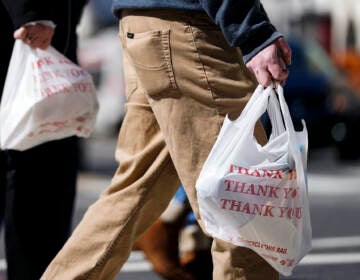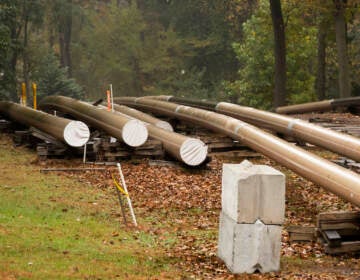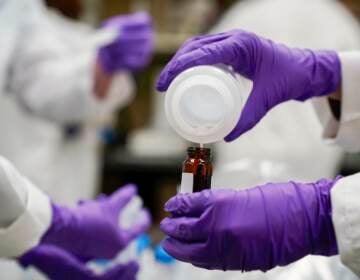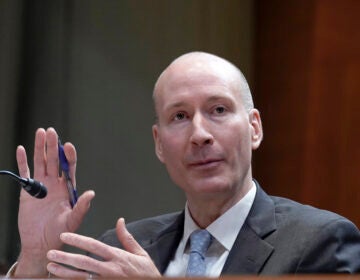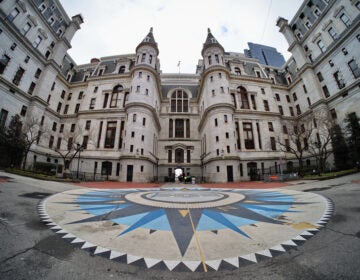A carbon pledge, a bag ban, a tree plan: Philly’s year in environmental news and what’s next
2021 was a big year for environmental issues in Philadelphia, and the fruits of many of the city’s efforts will come in the new year.
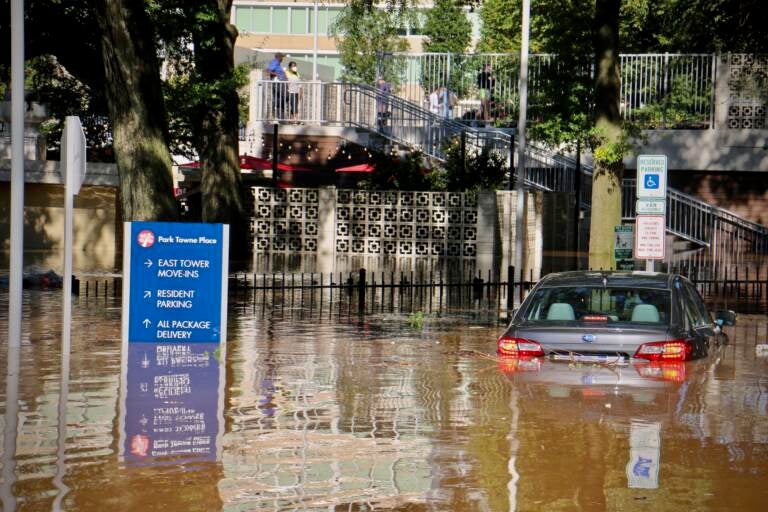
A car is swamped at Park Towne Place apartments off 22nd Street near the Vine Street Expressway. (Emma Lee/WHYY)
In Philadelphia, 2021 was a big year for environmental news.
The city ramped up its carbon neutrality commitment, banned plastic bags, gathered input on a plan to increase tree cover, and more. The region also experienced devastating flooding from the remnants of Hurricane Ida — a taste of the more intense storms and floods associated with a warming world. Philly’s work of adapting to a new climate reality, rethinking systems based on fossil fuels, and undoing decades of environmental injustice is just beginning.
“There’s been a lot of positive changes in the city,” said Gabriella Gabriel Paez, a tree advocate who volunteers with the Pennsylvania Horticultural Society. “A lot of what was done in 2021, we’ll see a lot of those fruits next year and beyond.”
Here is a look back at the biggest environmental news of 2021 and a preview of where these issues are headed next year.
City vows to become carbon neutral
Mayor Jim Kenney kicked off 2021 with a commitment that the entire city — from buildings to cars — would be carbon neutral by 2050.
The announcement in January ramped up a previous commitment to reduce greenhouse gas emissions 80% by 2050. It brought the city in line with President Joe Biden’s goal for the country and with where scientists say the world needs to be to avoid some of the worst consequences of climate change.
“It’s important that we create a very specific kind of benchmark that everyone strives toward collectively,” said Jerome Shabazz, who works on building environmental justice as executive director of the Overbrook Environmental Education Center in West Philly. “That leadership role is as important as systemic changes in terms of how the [city] actually operates.”
The city released a “climate action playbook” along with the carbon neutrality commitment, outlining the actions it is already taking or plans to take to reduce carbon emissions and prepare for a warmer, wetter future.
The takeaway: Existing plans are not enough to get the city to its goal. Strategies such as buying and generating more local renewable energy, expanding transit, making buildings more efficient, and reducing residential waste only shrink Philadelphia’s greenhouse gas emissions a fraction of the way to zero.
But if the country meets Biden’s goal of 100% clean electricity by 2035, Philly can get to carbon neutral with existing strategies, said Christine Knapp, director of the city’s Office of Sustainability. Knapp has also talked about the possibility of using carbon offsets to help zero-out the city’s emissions.
“We can’t hit our carbon neutrality goal as a city by ourselves,” Knapp said.
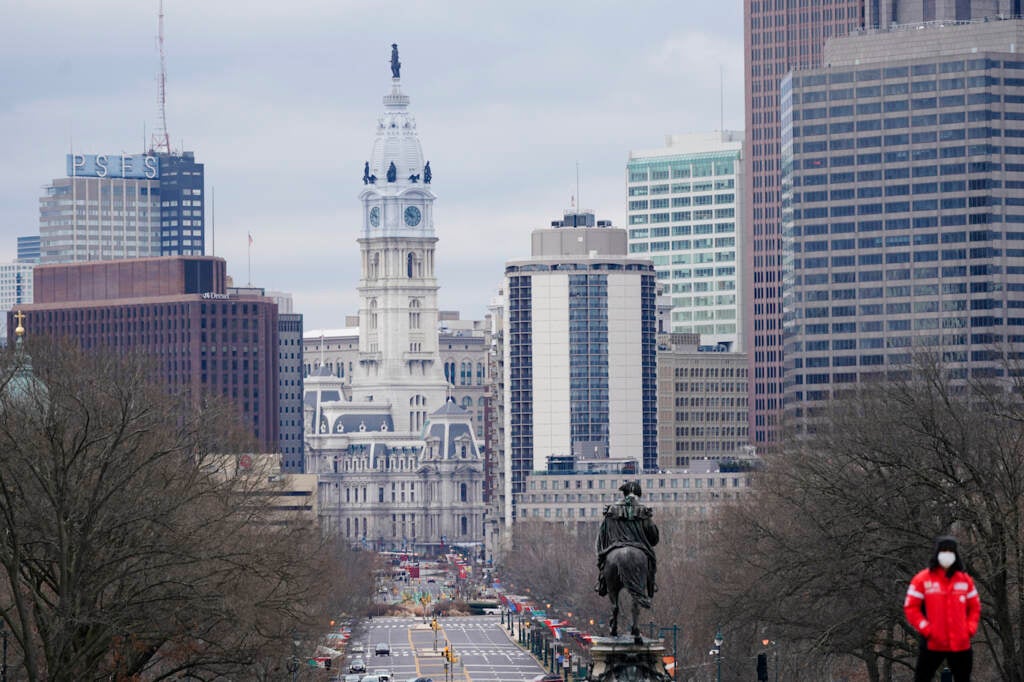
What’s next?
One strategy to chip away at Philly’s emissions could start showing results in 2022.
The Building Energy Performance Program requires all non-residential buildings over 50,000 square feet to do energy efficiency “tuneups” unless they certify as “high performance” or get an exemption. The program’s first few compulsory compliance deadlines are in 2022, including a deadline for exemption requests and one for buildings over 100,000 square feet to submit tuneup reports.
When it is in full effect, the policy is expected to reduce carbon emissions in Philadelphia by the equivalent of taking 40,000 cars off the roads. A majority of Philly’s greenhouse gas emissions come from buildings and industry.
Community groups demand benefits from refinery transformation
In early 2021, community groups in South and Southwest Philadelphia formed a coalition to negotiate a community benefits agreement with the redeveloper of the sprawling former Philadelphia Energy Solutions refinery complex that shut down after a massive explosion and fire in 2019.
While it operated, the PES refinery was the largest single source of air pollutants and greenhouse gas emissions in the city. Hilco Redevelopment Partners plans to transform it into an economic engine for the city — an e-commerce and logistics hub called the Bellwether District.
Members of the surrounding neighborhoods want guarantees that they’ll benefit from the transformation, too. Organizers of the United South/Southwest Coalition for Healthy Communities hope to reach a legally binding agreement with the developer that includes commitments around environmental health, employment, anti-displacement, and community assets.
“We want to be able to have a say in what is best for our communities,” Mark Clincy, a resident of South Philly and an organizer with coalition member Philly Thrive, told WHYY News earlier this month. “Because we haven’t had it for so long.”
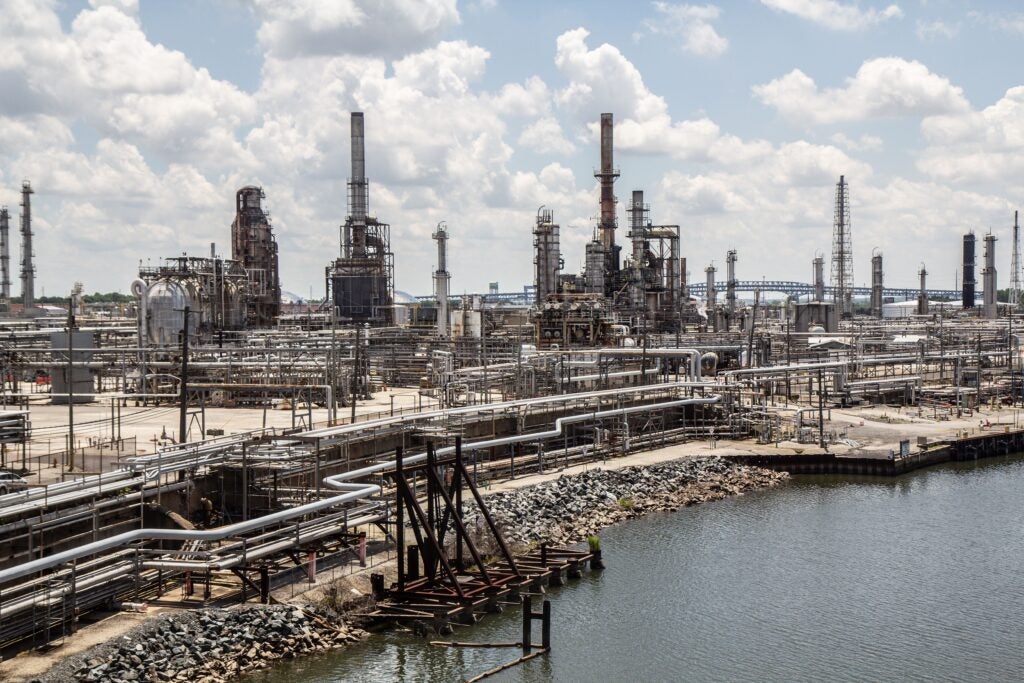
What’s next?
Hilco has indicated a willingness to negotiate, but the company has not said when it will start to hammer out a deal or which community groups will be involved.
Meanwhile, remediation of the significantly contaminated site continues. Last year, levels of cancer-causing benzene measured along the perimeter of the property averaged more than three times higher than the Environmental Protection Agency’s actionable level. Demolition of the refinery complex, whose industrial uses date back to the Civil War era, is expected to take four years.
A plan to keep the city cool with trees
The plan that aims to nearly eliminate the difference in temperature between the hottest Philadelphia neighborhoods and the citywide average moved forward this year.
The Philly Tree Plan is expected to chart a course to increase the city’s tree coverage to 30% within 30 years, targeting areas with high levels of poverty, poor air quality, and poor health outcomes. As of 2018, 20% of the city was covered by trees.
The draft plan released to the public in November included strategies to reduce the burden of street trees on homeowners, as well as hold developers accountable for killing trees and require them to plant more. Officials say the final version will also recommend updating lists of approved street and park trees to reflect a warming world.
Gabriel Paez, of Millbrook, has spent years planting trees and training other tree advocates in both English and Spanish through the Pennsylvania Horticultural Society. She helped advise the city on the Philly Tree Plan and said this year’s public outreach portion was a “big thing” for the city.
“When we spend the time to speak to residents to get their feedback and to get all of these things in writing, I believe that that’s a very important step to change for the better,” she said.
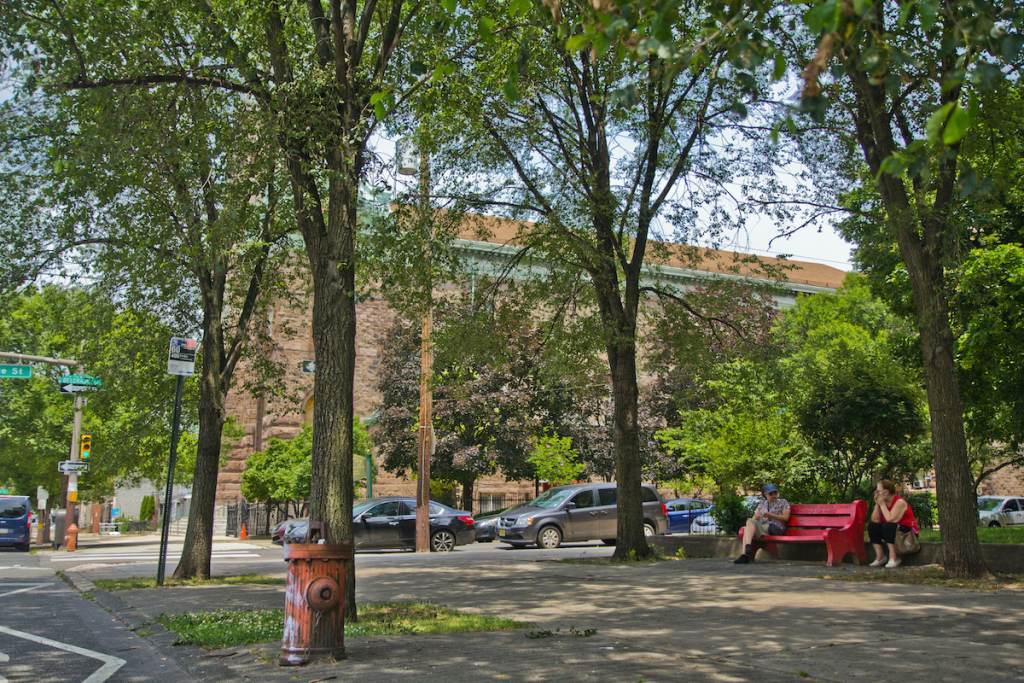
What’s next?
The public comment period for the Philly Tree Plan closed earlier this month. The final report is expected in early 2022.
The plan will cover the next 10 years, but its benefits will likely be felt longer, since it can take decades for a new tree to grow to its full size.
A climate wake-up call: Ida flooding
Remnants of Hurricane Ida swept through the Philadelphia region at the start of September, bringing flooding and tornadoes that killed several people, devastated homes and businesses in Manayunk, and filled Center City’s Vine Street Expressway like a swimming pool.
“The flooding of the Schuylkill during Hurricane Ida, I think, was really eye-opening for a lot of people,” said Russell Zerbo, an advocate with the Clean Air Council.
Cities are becoming more vulnerable to flooding as the climate changes, since warming makes quickly intensifying hurricanes more common and brings more torrential rain.
The dramatic flooding seen in the Philadelphia region after Ida was also a result of development patterns upstream, where roads and buildings stop water from seeping into the ground and force it into sewers and creeks instead.
“[Ida] really speaks to some of the sustainability practices that we need to apply to development,” Zerbo said.
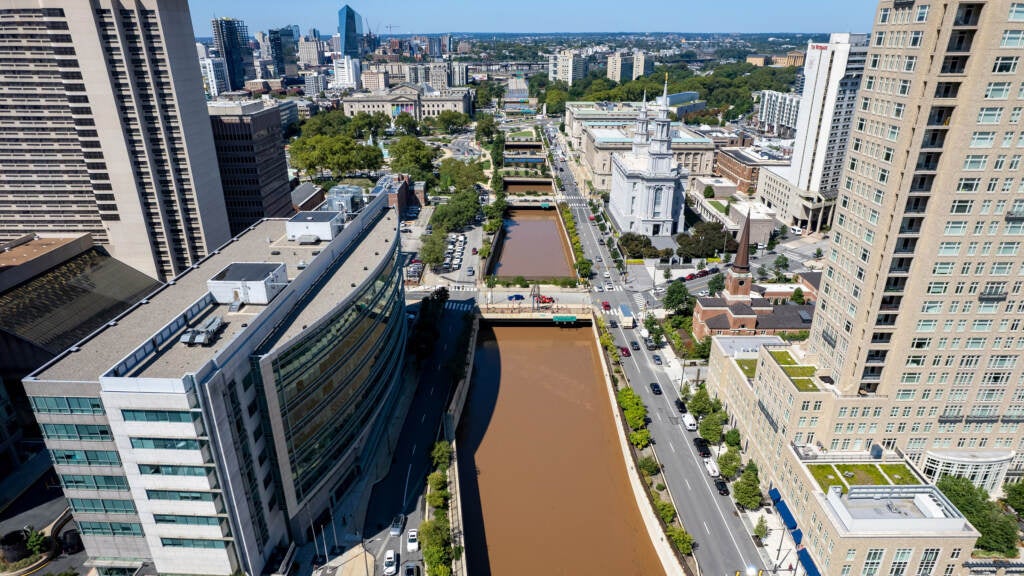
What’s next?
Residents and business owners in Pennsylvania hit by Ida flooding can still apply for financial assistance or loans from the federal government through Jan. 10.
The city hopes to get money from the Federal Emergency Management Agency for planning projects that would help the city understand its risk from hazards like flooding and how to mitigate that risk. The grants the city is targeting are competitive at the state and federal level, said Office of Emergency Management spokesperson Jeffrey Kolakowski, so the city will submit its proposals over the next few months to the Pennsylvania Emergency Management Agency, which will then decide which proposals to submit to FEMA.
The city also plans to work with communities, particularly the low-lying, flood-prone neighborhood of Eastwick, to make residents whole from prior flooding events like Tropical Storm Isaias. The city intends to focus flood mitigation and planning efforts around the lower part of the Schuylkill, where development is slated for the former PES refinery site, the Navy Yard, and Philadelphia International Airport, Knapp said.
“There’s a lot of land use activity planned and it needs to be better coordinated, because if one person makes a decision for their property, that could push water onto someone else’s property,” she said. “So that’s something that’s definitely going to be part of a focus of ours in 2022.”
Plastic bags are out, paper and reusables are in
Philadelphia’s plastic bag ban, originally passed by City Council in 2019, finally went into effect in October 2021.
It bans single-use plastic bags, with exceptions including bags used inside grocery stores for produce or meat.
But many businesses still give out plastic bags at checkout. A survey of more than 50 businesses by the advocacy group PennEnvironment found that more than half were in violation of the ban, and the city has issued dozens of warnings to businesses believed to be out of line based on complaints from residents.
“There’s been pushback, and that is normal and expected because whenever there’s something new and there’s something different, there’s always that resistance,” Gabriel Paez said. “But I believe that in the long term, this will really help the city be cleaner.”
The city uses an estimated 1 billion plastic bags per year. They litter streets and waterways and tangle up recycling facilities.
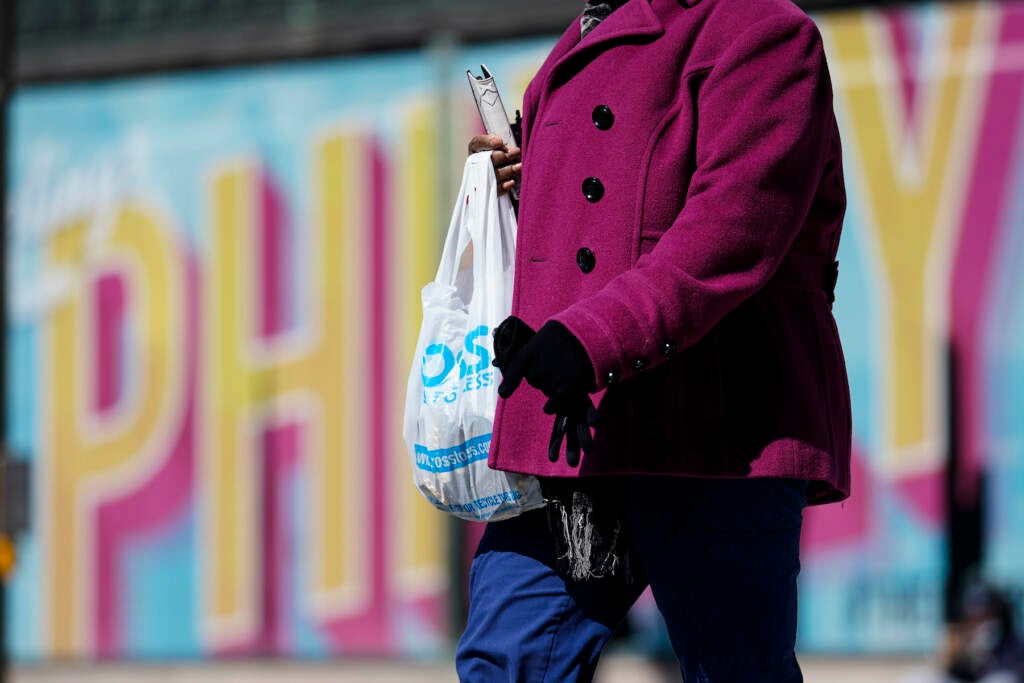
What’s next?
Philadelphia businesses will need to ditch single-use plastic bags entirely by April 1, 2022, to avoid penalties.
“We’re really hopeful that noncompliance will be the exception, not the rule,” said city spokesperson Karen Guss.
The Kenney administration supports legislation to clarify that thicker single-use bags are not allowed. A bill introduced by City Councilmember Mark Squilla in October would remove a maximum thickness of 2.25 mils from the bill’s definition of single-use plastic bag. The legislation could move forward next year.
Preparing the city’s gas utility for a new reality
Philadelphia Gas Works, the city-owned gas utility, took a small step toward a lower-carbon future this year.
The much-anticipated PGW Business Diversification Study came out in December. It aims to tackle the contradiction between the city’s carbon neutrality goal and its ownership of PGW.
The company is the largest municipally owned gas utility in the United States, and the gas it supplies contributes nearly a quarter of Philly’s carbon footprint. PGW spokespeople say it is committed to cutting greenhouse gas emissions, but a WHYY News investigation found that executives helped draft legislation that could tie the city’s hands around electrification.
The diversification study explored several possible routes forward for PGW, including electrifying buildings, supplying geothermal energy, weatherizing buildings, and harvesting gas from sewers or landfills to make energy. It also identified the complicated regulatory structure governing the utility as a barrier to its transformation, and said PGW’s path to a carbon neutral future could be laden with stranded assets, high upfront investments, and possible increases for ratepayers.
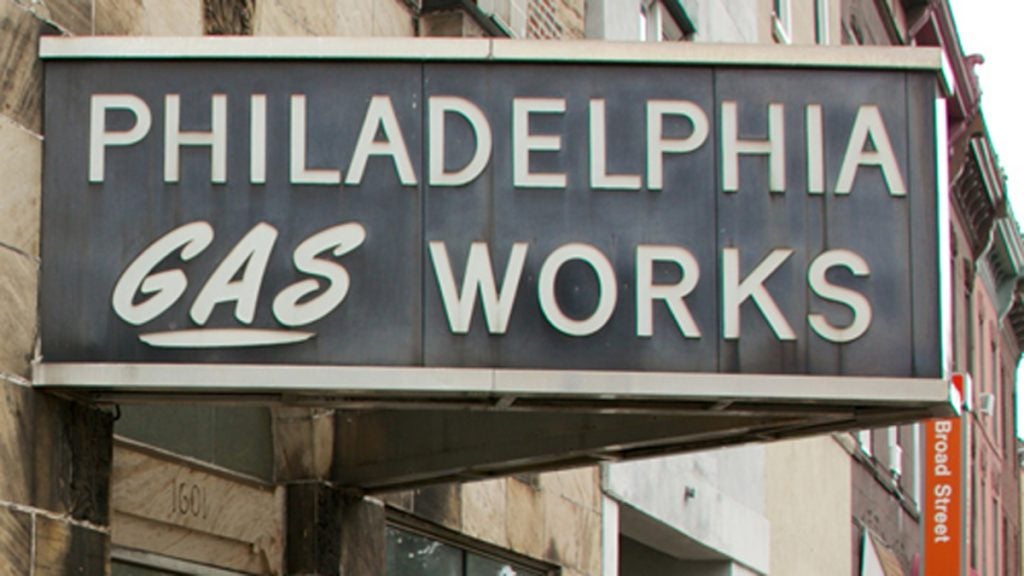
What’s next?
More studies. The report released this month does not prescribe a single path forward for PGW, but recommends pilot programs exploring “decarbonized gas,” weatherization, and geothermal energy — the path favored by advocates.
PGW’s future is “still a gigantic conversation,” said Zerbo, with the Clean Air Council.
City Councilmember Derek Green, who is also president of the Philadelphia Gas Commission, has said he plans to hold public hearings on the diversification study in City Council in early 2022.
Environmental justice commission
This year, the city began forming a commission to make recommendations to the mayor, City Council, and city agencies around environmental justice issues.
“It’s the first time in Philadelphia’s history that we’ve ever seen anything like this, so we’re really excited about it,” said Shabazz, with the Overbrook Environmental Education Center.
The group will consist of 10 to 15 members expected to serve two-year terms. City officials say they will prioritize Philadelphia residents who have personally experienced environmental injustice, including people living in areas burdened with high heat, flooding, or industrial pollution.
“The cautionary tale is that you don’t want the stronger, more influential stakeholders to drive the agenda,” Shabazz said. “Industry and academia have been studying these issues for years, and they have perspectives that have been developed as a result. I think the commission of this type should really reflect the vision and the experiences of the citizens.”
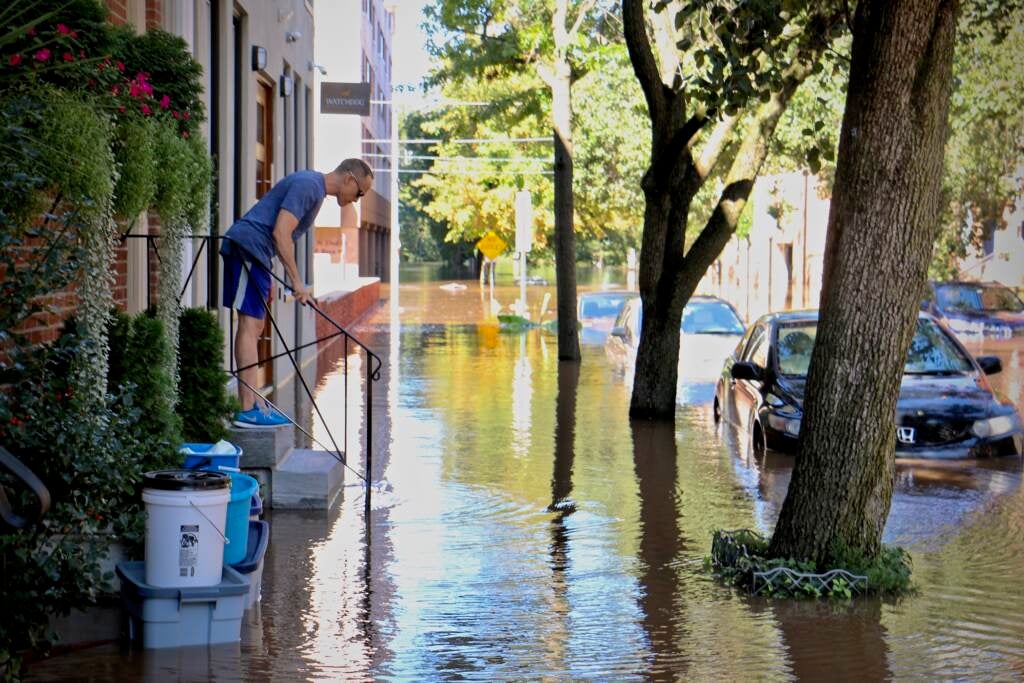
What’s next?
The application period to serve on the commission has closed, and the city plans to announce the individuals chosen in February, said Knapp, of the city’s Office of Sustainability. Those members will likely start engaging with the public in the spring.
The other ‘green’: Infrastructure law money
The infrastructure bill President Biden signed into law in November includes money for water quality, transportation, and a record investment in climate resilience.
Some residents of Eastwick want the city to go after this federal money to pay for a “land swap” that would relocate flood-threatened residents to safer spots within the neighborhood
Federal officials have already committed some of the infrastructure money to Eastwick, where it will speed cleanup of a Superfund site at an old landfill by about a year.

What’s next?
City officials are awaiting details on other specific pots of money that will be available — how and when the city can apply for it, Knapp said. The city wants to pursue funding for weatherization, electric vehicles, flood and heat mitigation, wastewater and stormwater infrastructure, and building and energy codes.
“We’re going through the infrastructure bill with a fine-tooth comb to look at all the different programs that are going to be receiving money and all the different competitive programs to prepare ourselves,” she said. “But we don’t really know the full details of anything until it comes out.”

Subscribe to PlanPhilly
WHYY is your source for fact-based, in-depth journalism and information. As a nonprofit organization, we rely on financial support from readers like you. Please give today.




